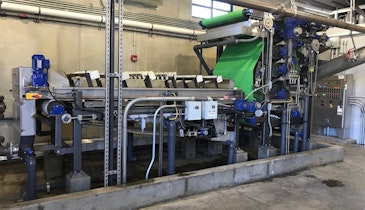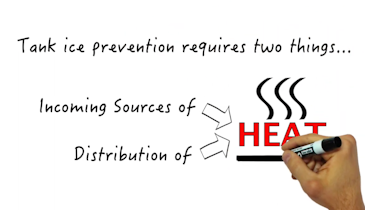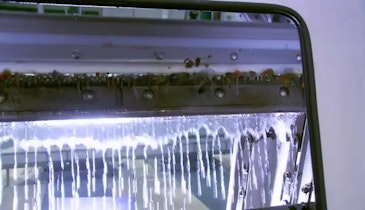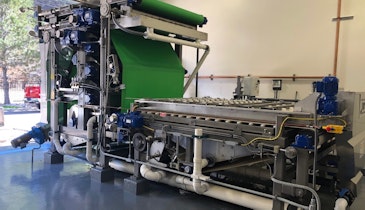Interested in Instrumentation?
Get Instrumentation articles, news and videos right in your inbox! Sign up now.
Instrumentation + Get AlertsIt’s hard to imagine extraordinarily complex systems. When you ride a bike, you likely aren’t thinking about the necessary interlocking of each chain, the airtight seal on your tires, or the countless R&D hours it took to create the most aerodynamic design possible. When you flush your toilet, likely, you’re not thinking about the microbial health of the wastewater treatment plant responsible for turning whatever comes out of your body into clean water. Let’s take a moment to consider the tremendous effort that has gone into optimizing the systems we contend with in our daily lives.
Treatment facilities rely on biological processes to break down the multitude of organics in wastewater and constantly search for ways to improve their operations. (Learn more, Improvements Through Sensor Placement). These biological processes convert wastewater into effluent, which is then safely returned to the water cycle following treatment. To ensure the safety and efficiency of these processes, analytical measurement of biochemical parameters occurs and is often required by regulatory agencies. The most common measurements performed in the industry are BOD, COD and TOC.
These measurements can provide valuable insight into the microbe’s ability to thrive during treatment. Optimization of these microbes will have a direct impact on the facilities’ treatment performance. If there’s insufficient organic matter, the microbes can grow too quickly, causing process issues in the plant, such as clogging. Too little organic matter and the microbes can die off, leading to ineffective effluent treatment. Careful monitoring ensures a proper microbial environment, which minimizes negative environmental impact on the water cycle. This blog will cover the basics of BOD, COD and TOC measurements and discuss their use in the wastewater industry.
What is TOC?
Total organic carbon (TOC) is often used as a nonspecific indicator of water quality. The ubiquitous nature of carbon makes sample concentration determination a useful screening tool to determine the status of water quality without the need for multi-day, specific organic determination. TOC converts all organic molecules in a sample into CO2 via an oxidation reaction. This CO2 is then measured via the instrument’s detector. The detector’s response is proportional to the concentration of the carbon in the sample, which can then be correlated to the water quality.
The oxidation reaction used to determine TOC typically comes in three varieties:
- High-temperature catalytic oxidation
- Heated persulfate/wet chemical oxidation with NDIR detection
- UV persulfate oxidation with either NDIR detection or conductivity/membrane conductivity detection
OI Analytical's TOC Analyzers are often used throughout the wastewater industry to determine contamination in the most simple, cost-effective way possible.
What is BOD?
Biochemical oxygen demand, or BOD, is a procedure for determining the amount of dissolved oxygen microorganisms use in a given sample. Aerobic biological organisms need oxygen to break down organic material, which can be a sizable cost for wastewater facilities. And because BOD is affected by the same factors that affect dissolved oxygen (DO), such as temperature and pH, most municipalities use DO sensors to optimize aeration, which, in turn, drops energy costs. (Check out the white paper on How to Control Activated Sludge with Online Sensors).
Measuring biochemical oxygen demand requires taking two measurements:
- A measurement at time zero (initial) where the amount of dissolved oxygen is recorded.
- The sample is then allowed to incubate in the lab for three to five, at which point the sample is measured again for the amount of dissolved oxygen (final). The resulting difference represents the amount of oxygen microorganisms consume to break down the organic matter in the sample during the incubation period.
What is COD?
Chemical oxygen demand, or COD, is another measure of water quality in wastewater treatment facilities. In COD testing, a known amount of strong oxidizing agent under acidic conditions converts all the organic species into CO2.
Once this oxidation is complete, the amount of the remaining oxidizing agent left in the solution is measured (typically done by titration and an indicator solution). The stoichiometric relationship between the oxidizing agent and oxygen is used to calculate the amount of oxygen consumed during the reaction, providing an analyst with a COD number typically expressed in mg/L. The test takes approximately two to three hours to complete, and unlike BOD, the test is not affected by heavy metals or other toxic compounds in the sample.
Technique Comparison:
When comparing the techniques for TOC, BOD and COD there are definite advantages for each, and some disadvantages as well.
TOC Advantages
- Fastest measurement time (mere minutes to run a sample)
- Automation limits user errors
- Low cost of ownership
- Minimal sample handling
- Not subject to most sample interferences
- Precise and accurate results
TOC Disadvantages
- Nonspecific
- It doesn’t quantitate the overall reactivity of the organics in the sample
BOD Advantages
- Historically used with many regulations calling for its use
- No hazardous waste generated
- Used by regulators for permits
BOD Disadvantages
- Measurement typically takes three to five days
- Very susceptible to interference
- Dependent on matrix
- Poor data reproducibility between tests
- A detection limit of 2 mg/L
- A large amount of sample handling required
COD Advantages
- Measurement time of several hours compared to days for BOD
- Compared to BOD, it is less affected by toxic components in the sample
COD Disadvantages
- Nonspecific: doesn’t distinguish between inorganic and organic carbon
- Susceptible to interference by some halides and nitrates
- Handling of toxic chemicals required to perform the test
Ensuring our wastewater effluent is safe and poses little threat to our environment is essential for protecting our planet. Measurement techniques like these help wastewater treatment plants operate efficiently and safely. Xylem has a long history of providing technical expertise in the wastewater industry and continues to innovate, offer and promote better solutions for its customers.
YSI is part of Xylem Analytics and a leading provider of water measurement solutions. Xylem Analytics is part of Xylem Inc., a global company focused on solving the world’s most challenging and fundamental water issues. As accurate analysis is crucial to the water industry, Xylem Analytics taps its diverse product brands for leadership in that field and beyond, providing the best laboratory and field monitoring instrumentation across a wide variety of industries.
Visit the YSI, a Xylem brand Storefront






